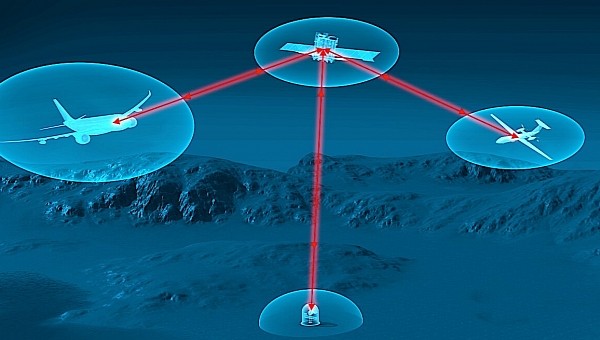A quick look at any modern aircraft currently in operation, be it military or civilian, will have you believe they are highly advanced machineries. And by all accounts, they are, given the level of technical sophistication that goes into making and operating them.
Key to an aircraft’s capability of flying itself and doing all those amazing other things is its ability to communicate with ground stations, beacons, other aircraft, and so on. The comms systems and technologies that allow this to happen are most of the time state-of-the-art, but that doesn’t mean there isn’t room for improvement.
The future in this field has to do with lasers and satellites. Allowing an aircraft to communicate large amounts of data in a fast and secure matter is essential to military aircraft success and can benefit civilian machines as well.
Several projects are being run at the time of writing in this field. Among the most advanced is Airbus’ UltraAir, announced this week as a collaboration with Dutch VDL Group and with the potential to be flight-tested as soon as next year.
You see, current satellite comms systems for aircraft are based on radio frequency. Because more and more people use these frequencies at the same time, bands get overcrowded, and they’re not all that secure either, being prone to interference and detection.
Being laser-based, the UltraAir will have none of those issues and has the potential to allow the transmission of 1,000 times more data (several gigabits-per-second) than radio frequency systems and ten times faster than what’s happening right now.
UltraAIr will use laser beams to connect a network of ground stations with geostationary satellites spinning around our planet at distances of 36,000 km (22,400 miles). It will be lighter than existing solutions, but also consume less power (the specifics of that were not provided). The only technical bit of info we were offered is that it will be equipped with a “highly stable and precise optical mechatronic system” that will allow it to do its thing.
Military customers are promised anti-jamming and low probability of interception features, but also connectivity with multi-domain combat clouds for aircraft and drones. Despite being devised primarily for military use, the system could easily be used on commercial aircraft as well, to provide high-speed data connections for the flying machines’ needs.
Airbus and VDL announced this week they are working on an UltraAir comms terminal that should be ready for a test flight in 2024. If all goes well with that, the following year might see an industrialized version (ready to be mass-produced) that could be flown the following year.
The project is backed by the European Space Agency’s ScyLight and NxtGen Hightech programs, with Dutch organizations, including the Netherlands Organisation for Applied Scientific Research (TNO), heavily involved.
The future in this field has to do with lasers and satellites. Allowing an aircraft to communicate large amounts of data in a fast and secure matter is essential to military aircraft success and can benefit civilian machines as well.
Several projects are being run at the time of writing in this field. Among the most advanced is Airbus’ UltraAir, announced this week as a collaboration with Dutch VDL Group and with the potential to be flight-tested as soon as next year.
You see, current satellite comms systems for aircraft are based on radio frequency. Because more and more people use these frequencies at the same time, bands get overcrowded, and they’re not all that secure either, being prone to interference and detection.
Being laser-based, the UltraAir will have none of those issues and has the potential to allow the transmission of 1,000 times more data (several gigabits-per-second) than radio frequency systems and ten times faster than what’s happening right now.
UltraAIr will use laser beams to connect a network of ground stations with geostationary satellites spinning around our planet at distances of 36,000 km (22,400 miles). It will be lighter than existing solutions, but also consume less power (the specifics of that were not provided). The only technical bit of info we were offered is that it will be equipped with a “highly stable and precise optical mechatronic system” that will allow it to do its thing.
Military customers are promised anti-jamming and low probability of interception features, but also connectivity with multi-domain combat clouds for aircraft and drones. Despite being devised primarily for military use, the system could easily be used on commercial aircraft as well, to provide high-speed data connections for the flying machines’ needs.
Airbus and VDL announced this week they are working on an UltraAir comms terminal that should be ready for a test flight in 2024. If all goes well with that, the following year might see an industrialized version (ready to be mass-produced) that could be flown the following year.
The project is backed by the European Space Agency’s ScyLight and NxtGen Hightech programs, with Dutch organizations, including the Netherlands Organisation for Applied Scientific Research (TNO), heavily involved.






